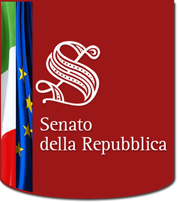The Medici Palace
The first important conversion work on the palazzo was performed when the Medici family acquired it. Giovanni, second son of Lorenzo the Magnificent and later Pope Leo X, after being appointed cardinal at only 17 years of age, decided to take up residence in Rome in 1492 and purchased the building in 1505. He had the building converted on the basis of a design by Giuliano di Sangallo and installed here what remained of his father's library after the family's expulsion from Florence. The palace became the Roman seat of the Medici family as well as a centre of humanistic culture. After becoming pope, Giovanni made his cousin, Giulio, cardinal of the Church and brought him to Rome. After Giovanni's death, Giulio inherited the building.
Giulio became pope in 1523, with the name of Clement VII (incidentally, this was the pope who rejected in 1533 Henry VIII's request for an annulment of his marriage to Catherine of Aragon, a decision which led to the breaking of the English Church from Rome a year later). Pope Clement bought out the legitimate inheritor of the building, Lorenzo's granddaughter Caterina, by providing her with the dowry which enabled her to marry the dauphin of France. At Giulio's death his nephew Alessandro inherited the building.
At the death of Alessandro and of his widow Margaret of Austria - the Madama after whom the palazzo was by then called -, Caterina, who had in the meanwhile become the queen mother of France, again inherited the palazzo, which in 1589 passed to Ferdinand I de' Medici, Grand Duke of Tuscany, by virtue of a clause in the marriage contract stipulated with Christine of Lorraine, granddaughter of Caterina.
A few years later the building became property of a third Medici pope, Leo XI, who was pontiff for a few days in 1605.




